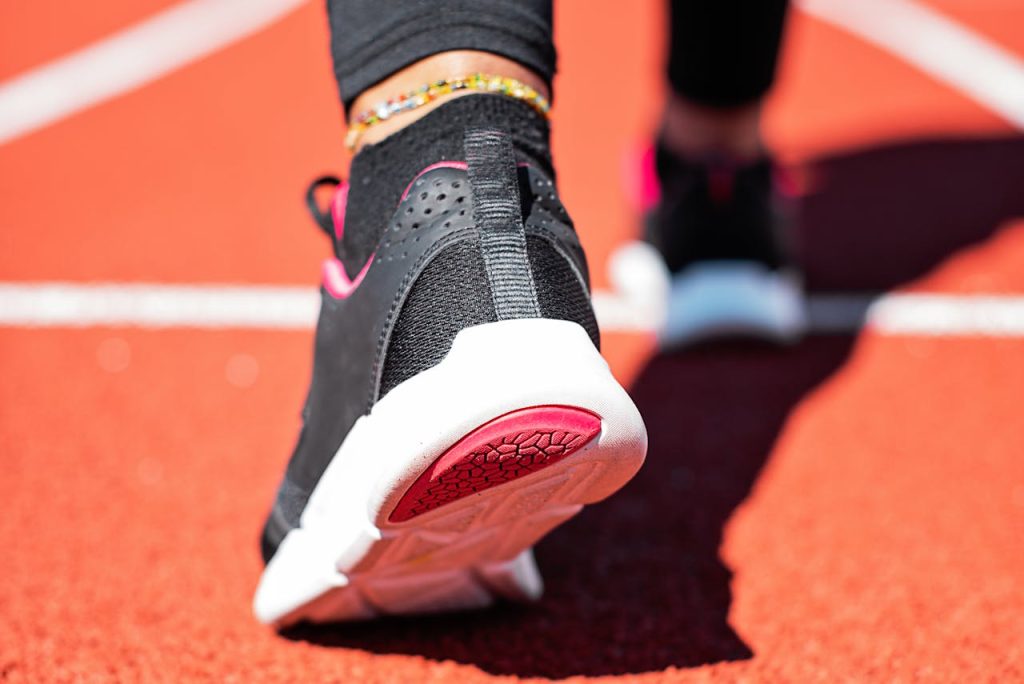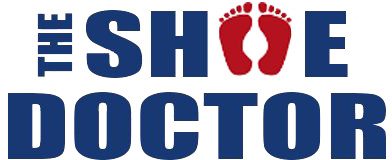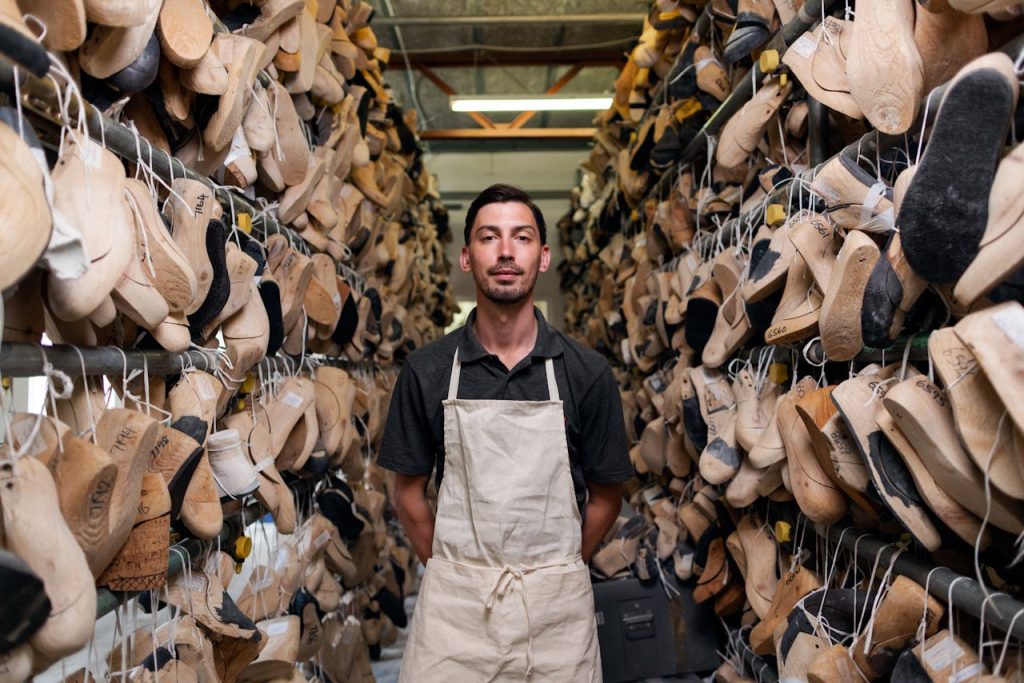Key Takeaways
- Foot fatigue is a very convenient thing to indicate when you have a problem; if it sticks around or impedes what you’re doing, then you need the right footwear support.
- Methodical self-diagnosis — monitoring your aching rhythms, examining your footwear and arch type — aids you in identifying whether inadequate support is behind your distress.
- It can cause knee, hip, or lower back pain as a result of altered body mechanics and alignment.
- Investing in supportive shoes, swapping out old pairs, and getting the right size are all great ways to minimize foot fatigue and avoid associated issues.
- Targeted exercises and insoles or orthotics can strengthen your foot muscles and provide the right support for you.
- If your pain is persistent or worsening, or if self-care fails to provide relief, try to get professional assistance for a detailed diagnosis and treatment.
To know if your foot fatigue is caused by poor support, check if pain or tiredness gets worse after standing or walking for long hours, or if you feel relief when switching to shoes with better soles. Most foot fatigue sufferers experience achiness in the heel or arch, and occasionally swelling or numbness can appear as well. Certain shoes have a tendency to wear out quickly, suggesting poor support. Flat or thin insoles are notorious for not cushioning every step, causing strain. Ill-fitting or unpadded shoes force small differences in the way you stand or walk, which accumulates more strain over time. The following passages detail what to observe and how to locate superior support for everyday consumption.
How To Pinpoint Poor Support
Foot fatigue is not haphazard. It frequently connects directly back to the support under your feet. To pinpoint poor support is to employ a methodical approach—trace symptoms, evaluate shoes, and scrutinize activities. A simple checklist-driven review keeps attention on pain location, shoe condition, arch type, and the relationship between activities and symptoms. Recording your own experiences is essential for a complete portrait.
Analyze Pain Patterns
Follow where pain or discomfort appears in your feet. Is it always on the balls of your feet, on the heels, or does it diffuse the whole sole? Recording whether pain is sharp, dull, or burning indicates nerve involvement or pressure points.
Next, note when pain begins. Does it strike during long walks, post-sports, or only post-stand at work? Contrast the pain with walking, running, or simply standing. It simplifies connecting pain to support issues or particular shoes.
Keep an eye out for numbness, tingling, or cramps. These typically indicate nerves are pinched from bad support or shoe fit. Maintaining such a log with dates, pain locations, and severity helps spot patterns over time.
Inspect Your Shoes
Check out the soles of your shoes. Uneven wear, such as additional tread loss on inner or outer edges, indicates how your foot lands. This tends to indicate misalignment or overpronation, both due to support.
Next, poke inside. Worn-out insoles, flat or crushed foam, or holes indicate that the shoe is not dispersing impact. Flex the shoe–if it bends too easily or twists, support is missing. Materials matter: soft, thin soles usually fatigue feet faster than structured, padded ones.
Shoes that don’t suit your activity or foot type—such as relying on flimsy flats for standing professions—are a common cause of calluses or blisters. Arch pain, heel pain, or foot deformities that develop in certain shoes are typical of inadequate support.
Assess Your Arch
Know your arch: flat, normal, or high. It counts. Flat arches disperse pressure broadly, whereas high arches concentrate stress on heels and toes. A simple “wet test” (wet your foot, step on paper) or an arch measuring toy thingy can reveal your arch type.
Poor support aggravates pain in the heel or arch, occasionally resulting in plantar fasciitis or heel spurs. If the pain is persistent, custom orthotics or good insoles can assist.
Observe Your Gait
Mind your step. Dragging feet or strange steps indicate your body compensating for substandard support.
As does gait with differing shoes. Film yourself walking to try to capture minor adjustments. Even minor adjustments in stride can indicate support issues.
Pain in ankles, knees, or hips might make an appearance. This is frequently from transferring weight in order to escape sore spots—a definitive indicator of inadequate support.
Sometimes, gait changes are tricky to detect. Slow-motion video or a mirror can assist.
Connect To Activities
Connect fatigue to your activities. Hard floors or long runs or hours on your feet — it all counts. If soreness increases with activity, bad support is probable.
Follow your activity levels and the onset of exhaustion. Notice if breaks alleviate symptoms. Tweaking your daily habits and practices can stave off exhaustion.
The Kinetic Chain Reaction
Been using the concept of the kinetic chain, a fundamental principle in biomechanics that explains how movement initiates at one joint and cascades through others in the body. When foot support is lacking, the chain reaction can manifest itself as pain or discomfort in places such as the knees, hips, and lower back. The table below summarizes how foot fatigue can chain-react into other parts of the body.
Foot Fatigue Origin | Affected Area | Typical Symptom | Example Activity |
Poor arch support | Knee | Pain, instability | Walking, running |
Flat foot posture | Hip | Tightness, limited range | Climbing stairs |
Improper footwear | Lower back | Strain, dull ache | Prolonged standing |
Imbalance | Multiple | Compensatory gait, soreness | Athletic training |
Knee Discomfort
Knee pain frequently emanates from inadequate foot support or position. When the foot doesn’t spread weight properly, the knee is forced to adjust, which can trigger discomfort or inflammation, particularly when you push yourself physically or even just walk around every day.
Changing shoes makes a difference. Prudent footwear can help minimize knee pain, and imprudent footwear can exacerbate it. For example, a low cushioned or arch support shoe can send the knee into contorted angles, increasing the chance for discomfort.
Foot fatigue often accompanies knee strain, particularly while running or jumping. Strengthening both feet and knees with exercises such as squats or balance drills can develop stability and minimize the chance of pain.
Hip Imbalances
Foot fatigue can cause hip imbalances by altering the way you walk or stand. Over time, this can influence posture and motion, resulting in uneven wear on hip joints or muscle tightness.
If one foot has a little less support, that hip may seem sore, tight, or even weak. If you notice improvements in your hip pain after switching to different shoes or inserts, you may have identified the culprit.
Movements like hip bridges, side leg lifts, and toe-tapping drills can increase power and stability in both your hips and feet.
Lower Back Strain
Foot fatigue can propagate up the chain to induce low back strain. This occurs when abnormal foot mechanics shift posture, placing additional stress on the lower back.
Wearing unsupportive shoes or walking for hours on end may put you at risk for back pain. Supportive shoes can help keep your spine aligned, easing the stress.
Easy stretches—such as toe touches or knee-to-chest holds—coupled with back and foot strengthening help protect against pain.
Supportive shoes and consistent feet/back strength work are essential.
The Footwear Factor
Wrong shoes are an incredibly common, yet easily overlooked, cause of foot fatigue. The right support, fit, and level of wear in a shoe can prevent feet from becoming fatigued or sore. Supportive shoes do more than just make you comfortable — they keep feet aligned, stave off aches, and decrease inflammation.
Feature | How it Helps |
Arch Support | Keeps foot shape, cuts stress |
Cushioning | Absorbs shock, eases impact |
Breathable Material | Stops sweat, keeps cool |
Firm Heel Counter | Adds stability |
Proper Fit | Stops slipping and pinching |
Unsupportive Shoes
Sandals with flat soles, skinny straps, or zero arch support seldom absorb your stride. Flip-flops and ballet flats, while ubiquitous, provide almost no support for everyday wear. These styles can allow the foot to roll or flatten, causing pain or even neuroma-like Morton’s. After extended days at the office, exhaustion manifests itself in the form of leaden, aching, or swollen feet. Others, like fashionable sneakers or loafers, mix style with natural arch support, which makes them healthier choices for frequent wear.
Worn-Out Footwear
Shoes erode, usually before you realize. Soles go flat, patterns in the tread blur away, and the interior gets shapeless. These signs indicate the shoe no longer protects or supports the foot as it should. Wearing used shoes daily can exacerbate foot pain and fatigue. Just checking shoes every few months and rotating out old pairs is an easy way to keep support at its peak.
Incorrect Sizing
Wearing the incorrect size causes far more than blisters. Tight shoes constrict, and loose ones let your feet slide. Both lead to overexertion, resulting in feet that are tired and sore after just a couple of hours. Visiting a shoe fitter assists in discovering the correct size and shape of your foot. Because foot size can shift over time, it aids in avoiding issues if you check the fit each year or so.

Proactive Support Solutions
Foot fatigue frequently begins with bad support, but it’s curable with a few proactive tricks that anyone can apply. Knowing where your support is lacking and making intentional changes — whether it’s through exercises, shoe selection, or custom insoles can keep you active and prevent long-term foot issues.
Targeted Exercises
- Toe curls: Pick up small objects with your toes.
- Calf raises: Stand and lift your heels, hold, then lower.
- Arch lifts: Stand, press toes into the floor, and raise arches.
- Marble pickups: Use toes to move marbles from one spot to another.
- Ankle circles: Rotate each foot in slow circles, clockwise and counterclockwise.
Strengthening the arches, toes, and calf muscles. These exercises reinforce the foot’s natural arch structure, preventing fatigue from weak muscles. Easy exercises such as toe stretches or calf raises can be performed at home, during work breaks, or whenever your feet start feeling fatigued. It helps you know when to turn up or turn down the heat. Switch up the schedule if you experience more or less tiredness, as foot requirements fluctuate with varying levels of activity.
Smart Shoe Selection
- Cushioning that absorbs shock
- Firm arch support
- Wide toe box for natural movement
- Non-slip sole for safety
- Breathable materials
Check out companies revered for foot-supportive shoes; they tend to put a lot of dollars into technology that enhances foot comfort. Cushioning and arch support are the most important. Stability is important, particularly if you’re on your feet all day. Never buy shoes without trying them on. Step on various surfaces and look for any pinching or uneven pressure. Swap shoes out when soles begin to wear or the support is less firm—old, worn shoes exacerbate fatigue.
Insoles And Orthotics
Insoles and orthotics offer additional support and padding for those who require a bit more than average shoe cushion. Custom orthotics–molded to your foot–can work wonders in cutting down pain and fatigue, particularly if you’re on your feet most of the day. Over-the-counter insoles are great if you don’t need custom. They provide additional arch support and are interchangeable between shoes. Observe how the bottoms of your feet feel after inserting new insoles. Modify or substitute them should pain return or the weariness remain.
When To Seek Help
Foot fatigue from bad support can be tricky to identify, but understanding when to seek assistance from a medical professional is crucial. Sometimes aches or fatigue are more than just old shoes or a long day. Watch for these signs that mean it’s time to get help:
- Pain that lingers or intensifies despite rest
- Swelling, redness, or changes in foot shape
- Pain that keeps you from daily tasks or sleep
- Numbness, tingling, or weakness in your foot or toes
- Foot pain after injury or trauma
- Ball of the foot pain that lingers
- Ongoing pain if you have diabetes or poor circulation
Persistent Pain
Pain that lingers beyond a few days is not normal, especially if it doesn’t improve with new shoes or rest. Such pain can make it difficult to walk, stand, or maintain your daily life. If you find you skip activities or walk differently to reduce pain, it can cause additional complications down the road. Early treatment can prevent minor issues from becoming bigger, chronic problems. Track pain intensity, onset, and relief to assist your physician in identifying the true source of your symptoms.
Worsening Symptoms
If you see your symptoms escalate—pain, swelling, or new areas of numbness—wait no longer. This might indicate issues such as arthritis, a stress fracture, or nerve problems. Record when you see shifts, or if self-care stops helping. If you have diabetes or poor circulation, seek assistance immediately if pain or numbness develops. Waiting will only cause your problems to become more severe and more difficult to repair.
Professional Diagnosis
Visiting a podiatrist or a physiotherapist is worth it when the pain persists. They have the means to identify issues, such as a neuroma or pinched nerve, that you could overlook. Bring your notes and be specific about your symptoms, how long you’ve had them, and what you attempted. Stay with their treatment plan. Timely treatment can go a long way when it comes to healing and pain management.
Monitoring And Early Action
Observe any new swelling, redness, or deformity. That’s when to seek help. Sudden injury, such as a sprain or fracture? Don’t hesitate—get help quickly. If your foot feels weak or you can’t move your toes, get checked.
Conclusion
Foot fatigue can bring you to a screeching halt. Weak support in shoes is frequently involved. Easy indicators like sore arches, tight calves, or weary ankles give you a hint. Examine your shoes for flat soles or worn-down areas. Trust your body—pain and swelling are honest indicators. Trade in your old shoes for a new pair with genuine arch support. Try insoles or consult a foot specialist if pain persists. Proper foot care keeps you moving strong. Detect minor shifts in advance. Get a step ahead of pain and walk, run, or work with ease. Need more advice or anecdotes? Check out my blog for real solutions and gear updates.
Frequently Asked Questions
1. How Can I Tell If My Foot Fatigue Is Due To Poor Support?
If your feet are fatigued, achy, or sore after standing or walking, it could be caused by poor support. See if your shoes are under-cushioned or have inadequate arch support.
2. What Are The Common Signs Of Poor Foot Support?
Typical indicators are regular foot aches, inflammation, and arch or heel soreness. You may see that your shoes are wearing unevenly.
3. Can Poor Support Affect Other Parts Of My Body?
Indeed, bad foot support can wreak havoc on your knees, hips, and back. That’s because your body’s alignment starts with foot support.
4. Does The Type Of Footwear Matter For Foot Fatigue?
Most definitely. Shoes that are too flat, too worn, or don’t provide arch support commonly cause foot fatigue. Supportive shoes will help!
5. What Are Some Solutions For Improving Foot Support?
Think insoles, go for shoes with good arch support, and ditch old sneakers. Stretching and strengthening foot muscles can assist.
6. When Should I See A Healthcare Professional For Foot Fatigue?
Visit a specialist if foot fatigue continues, intensifies, or is accompanied by swelling, redness, or intense pain. Early intervention prevents additional issues.
7. Are Custom Orthotics Necessary For Everyone With Foot Fatigue?
No, not all of you need custom orthotics. Most of us can be helped by some good OTC insoles or supportive shoes. Ask an expert if in doubt.
Say Goodbye To Tired, Aching Feet With Orthotics For Foot Fatigue From The Shoe Doctor!
If standing all day leaves your feet burning, sore, or completely drained, orthotics for foot fatigue may be exactly what you need to stay comfortable, supported, and energized. Long hours on your feet can lead to muscle strain, poor alignment, and stress on your joints. Our custom orthotics help evenly distribute pressure, support your arches, and improve posture, so every step feels lighter and more stable.
At The Shoe Doctor, we bring over 20 years of experience crafting orthotics that target the root causes of fatigue. Russell uses advanced 3D foot-mapping technology to measure your unique foot structure and gait, allowing us to create precision-fit orthotics designed for maximum relief and all-day comfort. In partnership with the Spine & Injury Medical Center in San Jose, we take a full-body approach to foot health, helping you move better and feel better every day.
If you’re in the South San Francisco Bay Area, trust The Shoe Doctor for expert-made orthotics that fight fatigue and protect your long-term mobility. Schedule your free consultation today and take the first step toward pain-free movement and renewed energy.
Disclaimer
The materials available on this website are for informational and entertainment purposes only and not to provide medical advice. You should contact your doctor for advice concerning any particular issue or problem. You should not act or refrain from acting based on any content included in this site without seeking medical or other professional advice. The information presented on this website may not reflect the most current medical developments. No action should be taken in reliance on the information contained on this website and we disclaim all liability for actions taken or not taken based on any or all of the contents of this site to the fullest extent permitted by law.


